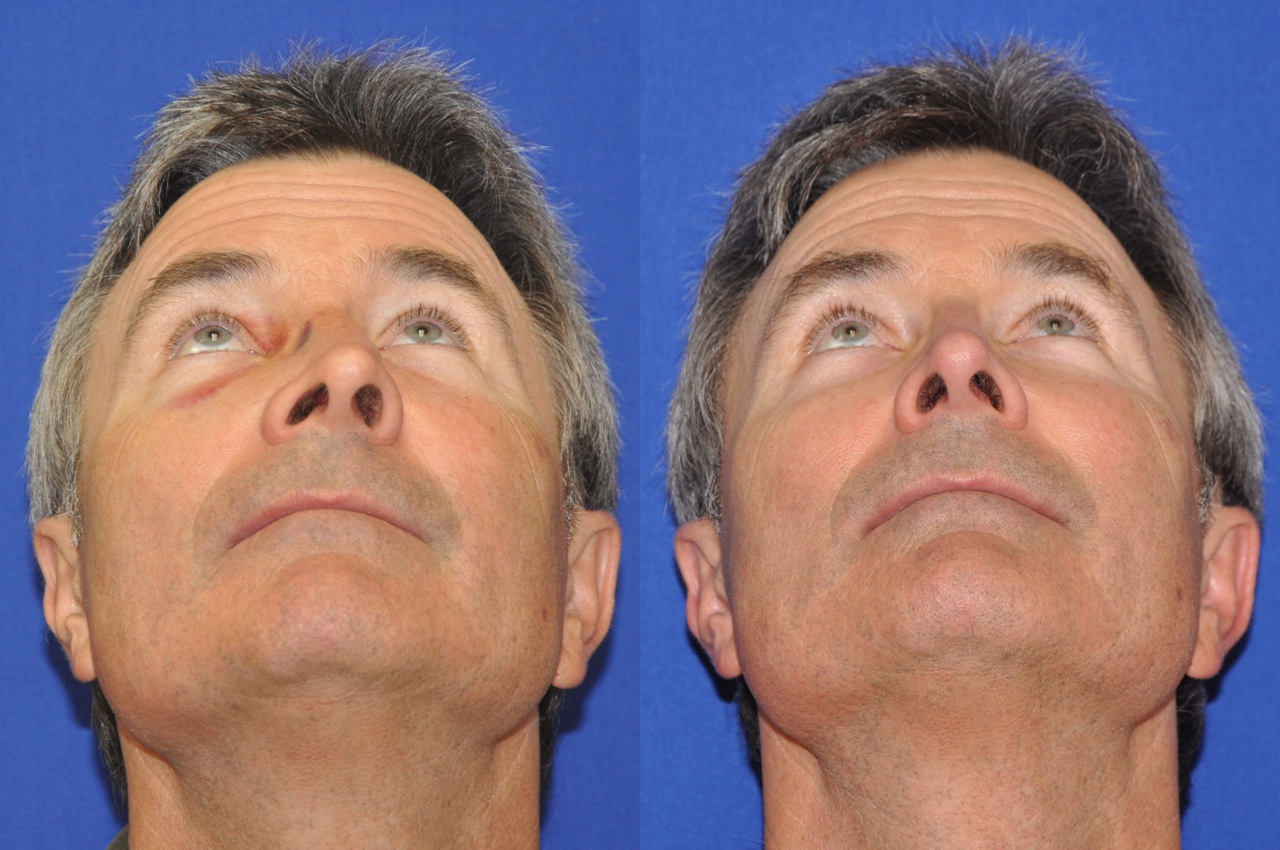
Literatures show that ECS results in better functional outcome than traditional in situ septorhinoplasty for patients with severe deformities. Severe deviation of the septum may call for ECS, which involves the removal of native deformed septum and the replacement with a reconstructed neoseptum. In our case, although the patient was presented with nasal bone fracture involving septal fracture, only closed reduction was performed initially, which ultimately resulted in severe septal deviation and saddle nose, calling for secondary surgery.Ī variety of methods in managing the nasal septum exists, ranging from closed approach with intranasal splints to open approach. Even a simple physical examination may indirectly hint the possibility of septal fracture, since mucosal tearing was found to be statistically significant for concomitant septal fracture. Previous reports show the rate of concomitant septal fracture in nasal bone fracture patients to be ranging from 46.9% to 89.7%, and we wonder whether septal assessment was thoroughly done in majority of these patients, considering the rate of complication after closed reduction of the nasal bone fracture. Even in cases of septal reduction may result in functional deformity after closed reduction, since reduction of anterior portion of septum leaves a dislocated posterior septum intact. The importance of septal assessment lies in the fact that the distortion of septal fracture progresses with time due to the release of locked internal stress system, and fibrosis of healing tissue results in nasal valve deformity and nasal tip imbalance, causing nasal cavity obstruction. Over the past several decades, the role of septal fracture in nasal bone fracture management has been emphasized, since the most important step in determining the aesthetic, functional outcome of nasal bone fractures is the assessment of the nasal septum. Incomplete closed reductions often result in persistent C-shaped fractures involving the bony and cartilaginous septum, which often occur in displaced bony fractures. The relatively high rate of revision rate after closed reduction often originates from unrecognized injuries of the nasal septum, upper, lower lateral cartilages, and the keystone area, which are not amenable to closed reduction. As a result, patient satisfaction and revision rates after closed reduction range from 33% to 85% and 15% to 50%, respectively. The rate of complication after nasal bone reduction remains high, ranging from 9% to 50%.

Potential complications after nasal bone reduction include obstructed breathing, infection, recurrent deformity, inadequate correction, asymmetry, patient dissatisfaction, and olfactory disturbances. 6).Īlthough complications of nasal bone fracture itself had been widely studied, complications of the management of nasal bone fracture had not been explored much. At 2-month-follow-up, the patient visited without any complaint, and the corrected septum and the left nasal cavity maintained its patency ( Fig. The patient was discharged four days after the surgery without any postoperative complication. After the surgery, the saddle nose was corrected, and the left nasal cavity was well reconstructed ( Fig.

The L-strut shaped cartilage was inserted back into its original location, and the left septal mucosa was not sutured to the residual left septal mucosa at the caudal end, so that it could be healed by secondary intension. A layer of rib cartilage, reinforced by another layer of perichondrium, was used as a dorsal only graft. Rib cartilage was carved and attached to two perpendicular sides of septal cartilage, functioning as bilateral extension spreader grafts on one side and a columellar strut on the other side ( Fig.

After removing redundant cartilage and fracture lines, the septal cartilage was designed into a new L-strut shape. The entire septal cartilage was dislocated and taken out.

Septal mucosa was repositioned to be sutured with the residual right septal mucosa at the caudal end of the nose. Incision was made from the left nasal cavity inlet, and mucosal dissection, with the elevation of the septal mucosa, was performed. During the surgery, a 4 cm-long-segment of sixth rib cartilage, along with perichondrium, was harvested from the right side.


 0 kommentar(er)
0 kommentar(er)
